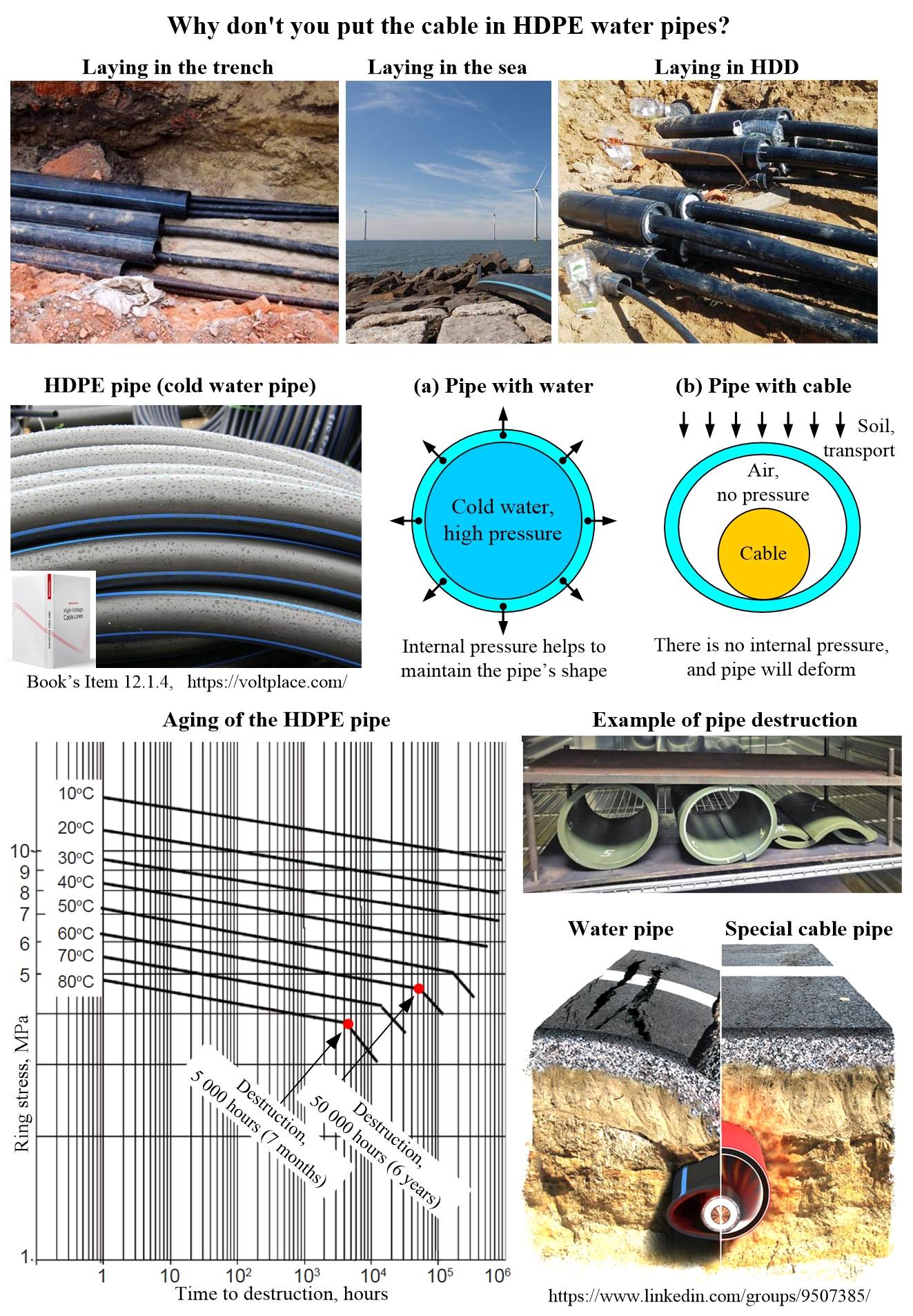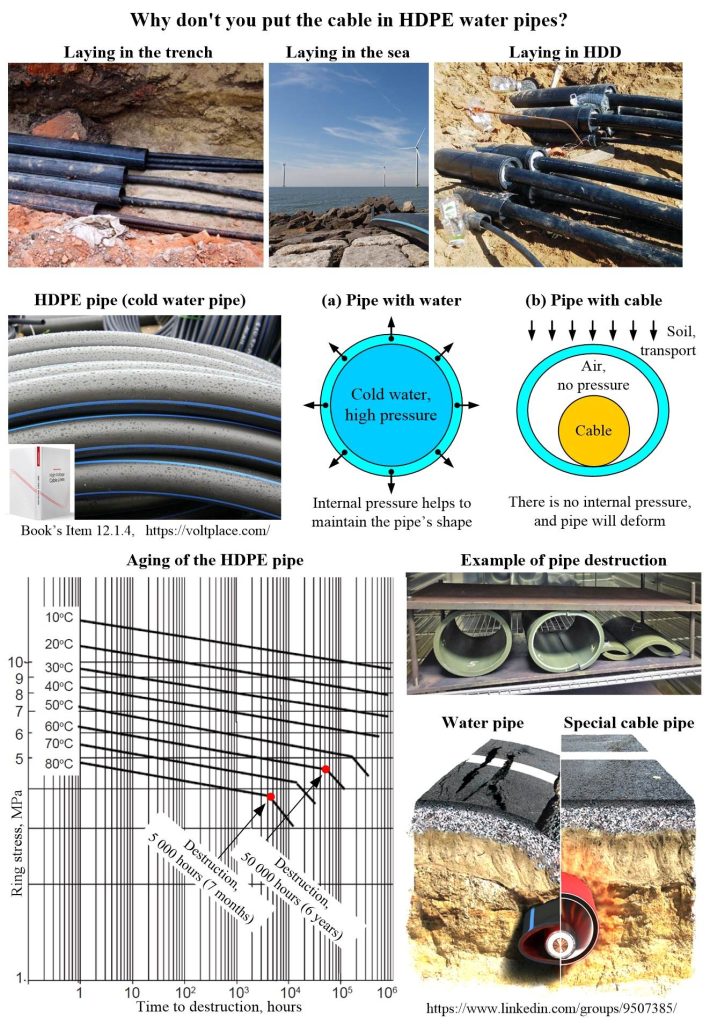
High-voltage cable and HDPE pipe
Cable lines are increasingly laid not in the open ground, but in pipes (ducts). This allows you to protect cables from mechanical influences and aggressive environment, ensure quick replacement of the cable with a new one, lay cables not only by the traditional method in trenches, but also by horizontal directional drilling HDD (this method allows to lay cables with a minimum amount of excavation, to cross obstacles, etc).
Let’s discuss which pipes should be used for laying 6-500 kV cables. The following pipes (ducts) are most often seen:
1️⃣HDPE pipes (they bend, are joined by welding).
2️⃣PVC pipes (they do not bend; are connected using a “mom-dad” bell).
The topic of pipes is very extensive and will be divided into several posts. Today, let’s start with some aspects of HDPE pipe application. It is such pipes that are the most versatile, because due to butt welding of several pipes, a single flexible pipe channel is obtained, which can be easily stretched along the route and, most importantly, such pipes can be tightened into a HDD borehole. At the same time, PVC pipes do not provide these possibilities, since they are not flexible and are not butt-welded.
HDPE pipes can be seen everywhere – see the top row of photos. Both AC and DC cables are laid in them. However, are they so good for laying cables? Let’s try to figure it out. There are many arguments against HDPE pipes, but today we’ll start with simple one – heat resistance.

HDPE pipes are pipes for cold water and gas supply systems. According to the standards, such pipes are designed for long-term operation:
✅ at a temperature of no more than 40℃;
✅ under conditions of significant internal pressure, Fig.a.
What about our 6-500 kV cables?
✅ XLPE is designed for 90℃ on the core, and in overload mode up to 105-110℃ (note: usually the temperature at the cable surface is 5-10℃ less than on the core);
✅ The cable does not create pressure inside the pipe (and thus it is noticeably more difficult for the pipe to maintain its shape under external ground/transport pressure, Fig.b).
As a result, HDPE pipe with cable is subjected to a temperature that is 2 times higher than its permissible, and at the same time it is devoid of internal pressure, that is, a key factor contributing to the preservation of its shape. As a result, over time, the pipe loses its mechanical strength. According to experimental data, at a temperature of 80℃, the pipe loses its strength after 7 months (see diagram). So, the cable is trapped in the pipe, that is, buried underground.
It is a bad idea to lay cables in HDPE pipes. These pipes are not designed for cables. Not to mention the fact that they are flammable and have many other properties that are not compatible with cables. Cables should not be laid in water pipes, but in special heat-resistant non-flammable pipes (ducts).
Note: If the pipe is painted red, this does not mean that it is suitable for cable!
Please see Item 12.1.4 of the book
